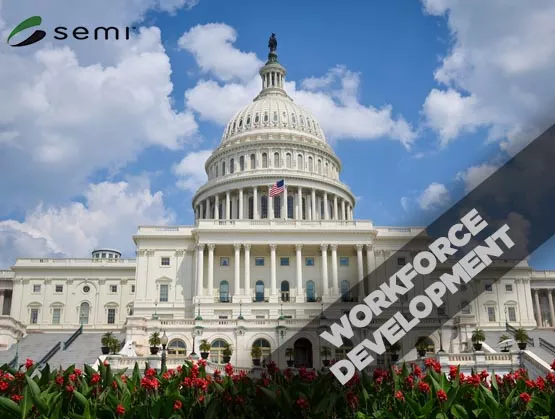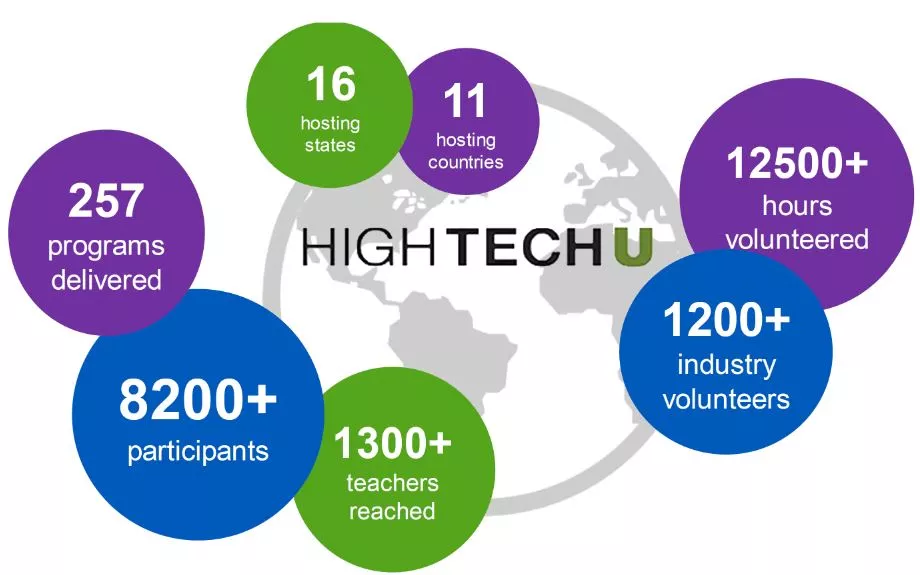
As the American economy continues to climb out of its Covid-induced recession, one glaring concern remains: Too few workers with the skills today’s economy requires to fulfill its potential. One industry in particular – microelectronics – has encountered a number of obstacles to growth in the U.S., including a shortage of skilled workers and too little workforce diversity.
On February 15, the Science Research and Technology Subcommittee, one of five subcommittees of the United States House Committee on Science, Space, and Technology, with jurisdiction over large swaths of semiconductor policy, held a timely hearing to explore semiconductor legislation and the industry’s workforce needs. As the SEMI Foundation’s executive director, I testified before the panel. I was joined by Dr. Tsu-Jae King Liu of the University of California, Berkeley, and Dr. Osama Awadelkarim of Pennsylvania State University. The Science Research and Technology Subcommittee is made up of some of the brightest minds in Congress, so it was refreshing to participate in such thoughtful and thorough conversation with lawmakers.
The hearing was a bipartisan exercise, with members of Congress asking pointed questions about the size and scope of the workforce problems, and solutions to combat it. For my part, I pointed to the need for increased industry visibility, stronger investments in K-12 STEM education, and a greater focus on diversity, equity, and inclusion in the industry.

I spent weeks researching and learning about the subcommittee members, anticipating potential questions and making sure my responses clearly represent our work at the SEMI Foundation. I constructed answers that highlighted our current agenda, but also made clear the need for an all-hands-on deck response to confront the semiconductor industry’s workforce development and diversity, equity, and inclusion challenges.
I educated the committee about several current SEMI initiatives:
The SEMI Career and Apprenticeship Network (SCAN), now under development, will be a national apprenticeship network and program that provides technical training for high-demand jobs identified by SEMI member companies. The objectives of the competency-based program are to:
- Build a national apprenticeship network and model
- Foster awareness of rewarding industry careers
- Create pre-apprenticeship pathways that cultivate a qualified and diverse pool of apprentices
- Move historically excluded people into quality jobs
- Help the semiconductor industry offer alternative educational pathways and tap diverse talent pools
- Address workforce deficits
- Strengthen local, regional, and national economies
 SEMI VetWorks is designed to encourage more veterans and active-duty military transitioning to civilian careers to enter careers in the microelectronics industry. The Foundation created a VetWorks Guidebook to help companies attract and retain veterans and is supporting job fairs and other events to reach this rich source of talent. The Foundation has also partnered with the Manufacturing Institute through its Heroes MAKE America program.
SEMI VetWorks is designed to encourage more veterans and active-duty military transitioning to civilian careers to enter careers in the microelectronics industry. The Foundation created a VetWorks Guidebook to help companies attract and retain veterans and is supporting job fairs and other events to reach this rich source of talent. The Foundation has also partnered with the Manufacturing Institute through its Heroes MAKE America program.
The SEMI - American Semiconductor Academy (ASA) partnership will build a comprehensive workforce development program designed to close the microelectronics industry's widening talent gap and maintain U.S. economic competitiveness and national security. The partnership draws on the complementary strengths of SEMI and ASA to bolster workforce education and training programs nationwide and target job skills, academic degrees and continuing education in order to grow and diversify the semiconductor industry’s talent pool. The partnership also aims to accelerate scientific innovation and technology commercialization by connecting over 200 universities and community colleges to the more than 1,500 SEMI member companies with U.S. operations.
The Industry Image and Awareness Campaign is a national media and education campaign featuring video vignettes about jobs in the industry, an online career portal providing skills and interest assessment tools, and information on job training.
High Tech U is a longstanding immersive STEM education program for high-school students. We plan to launch an update of the program to connect with more students and urge SEMI members, big and small, to take advantage of the program’s broader reach.

After the hearing, I was contacted by a variety of stakeholders from multiple state governments, workforce development organizations, and countless member companies who shared their excitement about the Foundation’s work and expressed hope that the momentum to invest in these types of programs grows. I’m thrilled about the enthusiasm the Foundation’s work has generated in the industry and beyond.
The hearing, SCAN program, SEMI-ASA partnership, and other Foundation programs are important steps to tackling a big problem. SEMI, the SEMI Foundation, and our partners and members around the country all have an important role to play by raising awareness around the issue of workforce development and advocating for a robust and sustained federal investment in our talent pipeline. Without the help of Congressional leaders, our industry – and our economy – may never reach their full potential.
Watch the hearing and read Shari’s testimony.
About the Author
 Shari Liss is Executive Director of the SEMI Foundation, overseeing workforce development and diversity, equity and inclusion initiatives, as well as the industry image and awareness campaign. She has more than 25 years of experience supporting education, career awareness and workforce development throughout the technology industry.
Shari Liss is Executive Director of the SEMI Foundation, overseeing workforce development and diversity, equity and inclusion initiatives, as well as the industry image and awareness campaign. She has more than 25 years of experience supporting education, career awareness and workforce development throughout the technology industry.